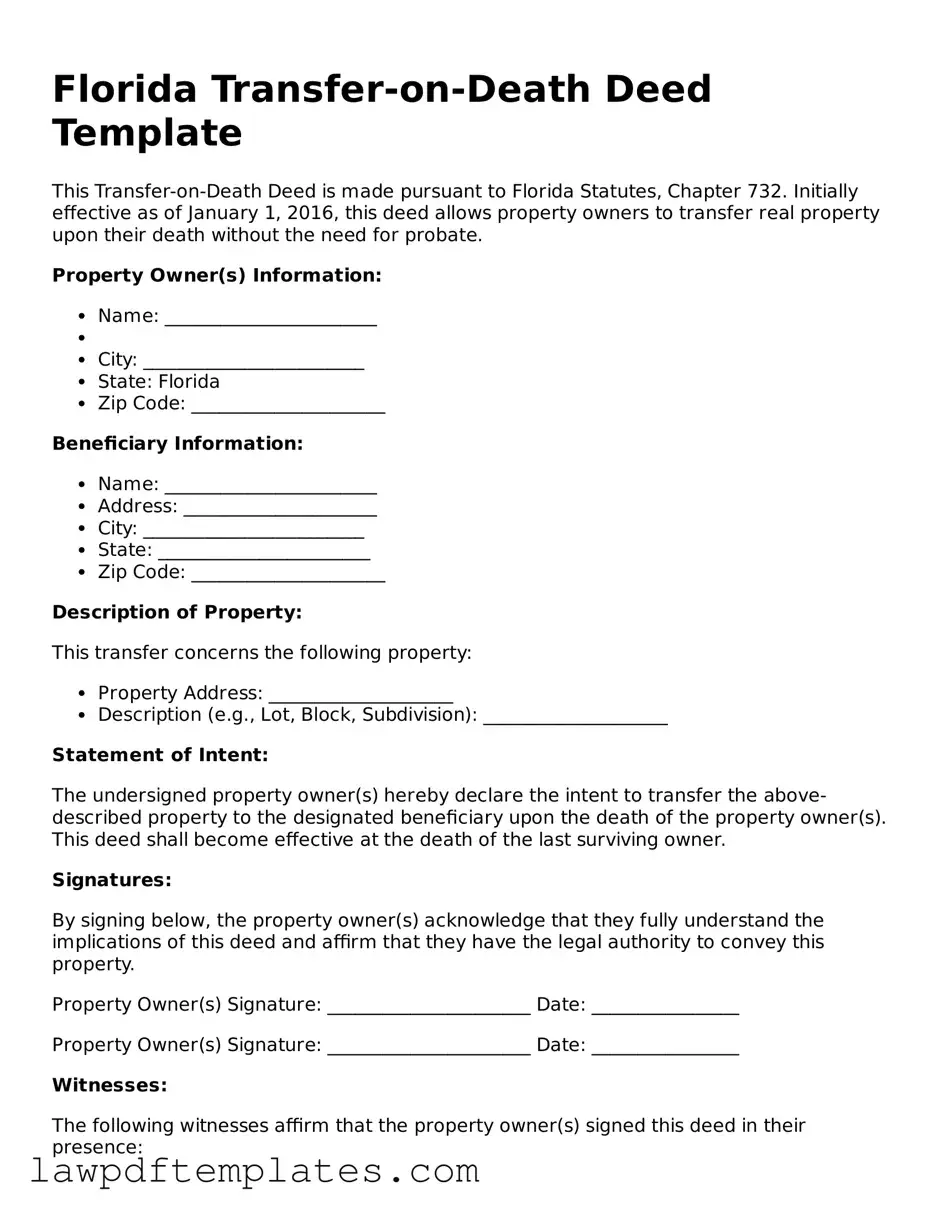Florida Transfer-on-Death Deed Template
This Transfer-on-Death Deed is made pursuant to Florida Statutes, Chapter 732. Initially effective as of January 1, 2016, this deed allows property owners to transfer real property upon their death without the need for probate.
Property Owner(s) Information:
- Name: _______________________
-
- City: ________________________
- State: Florida
- Zip Code: _____________________
Beneficiary Information:
- Name: _______________________
- Address: _____________________
- City: ________________________
- State: _______________________
- Zip Code: _____________________
Description of Property:
This transfer concerns the following property:
- Property Address: ____________________
- Description (e.g., Lot, Block, Subdivision): ____________________
Statement of Intent:
The undersigned property owner(s) hereby declare the intent to transfer the above-described property to the designated beneficiary upon the death of the property owner(s). This deed shall become effective at the death of the last surviving owner.
Signatures:
By signing below, the property owner(s) acknowledge that they fully understand the implications of this deed and affirm that they have the legal authority to convey this property.
Property Owner(s) Signature: ______________________ Date: ________________
Property Owner(s) Signature: ______________________ Date: ________________
Witnesses:
The following witnesses affirm that the property owner(s) signed this deed in their presence:
Witness Signature: ______________________ Date: ________________
Witness Signature: ______________________ Date: ________________
Notarization:
State of Florida
County of _______________
On this _____ day of __________, 20___, before me, personally appeared the property owner(s), known to me to be the person(s) whose name(s) are subscribed to the within instrument, and acknowledged that they executed the same for the purposes therein contained.
Notary Public Signature: ______________________
My Commission Expires: ______________________
